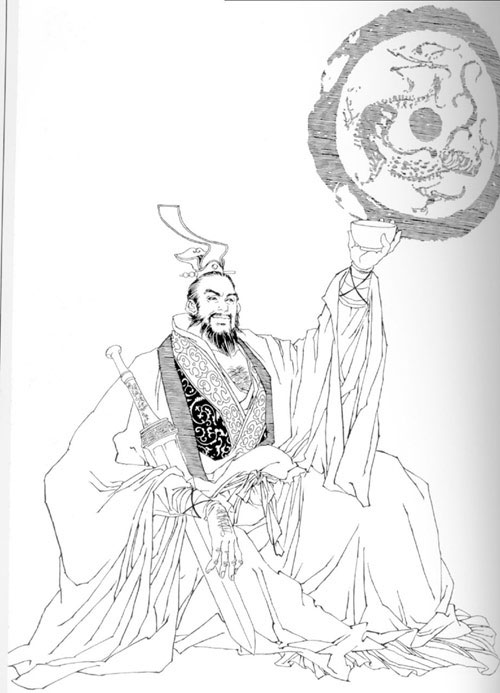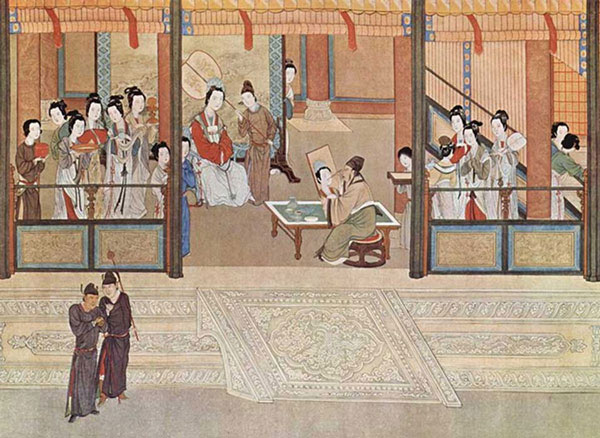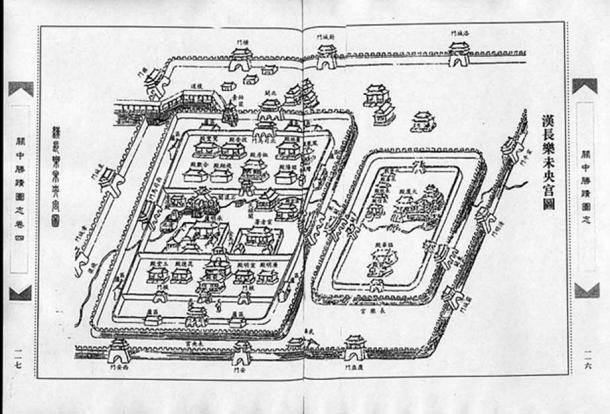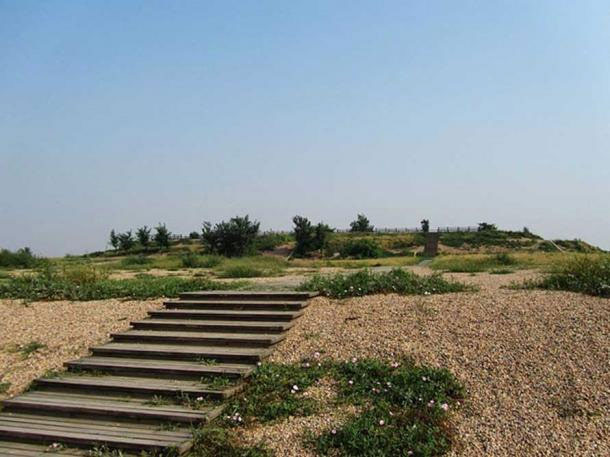The Forbidden City is one of the largest wooden architectural complexes in the world, renowned for its unique architecture and vast scale. It has been recognized by UNESCO as a World Heritage Site. However, throughout the long history of China, there exists another magnificent and much larger palace complex than the Forbidden City that is less frequently mentioned: “Weiyang Palace.”
Weiyang Palace is a palace complex that was constructed in 200 BC under the orders of Emperor Gaozu of Han, Liu Bang, and supervised by Chancellor Xiao He. The palace served as an administrative center and residence for the royal family of China during the Han, Jin, and several other dynasties of the Southern and Northern Dynasties period.

Emperor Gaozu of Han, Liu Bang (256 BC – 195 BC). (Image: vietnamese.cri.cn).
So why is it called Weiyang?
The name of this grand and massive complex is quite special. The two characters “Weiyang” are believed to originate from the Book of Songs, literally implying “(something) has not yet reached its midpoint,” “there is more than half to go,” but colloquially, it means “endless.”
Another name worth mentioning is Chang’an Palace, which can be translated as “eternal happiness.” Therefore, when combining the names of these two magnificent palaces, they convey the meaning of “eternal happiness has not yet reached the midpoint.” This is one of the two main and important palace complexes during the Han Dynasty.

Weiyang is the largest and most magnificent palace in the history of China, built during the Han Dynasty. (Image: Ancient Origins).
Weiyang Palace is located in Chang’an, the capital of the Han Dynasty (now Xi’an), in Shaanxi Province, China. The palace stretches approximately 2.15 km from east to west, while its length from north to south is about 2.25 km, covering a total area of approximately 4.8 km².
In terms of area, Weiyang Palace is nearly 7 times larger than the Forbidden City (also known as the Palace Museum, which covers 0.72 km²). In other words, it would take nearly 7 Forbidden Cities to fill the space occupied by Weiyang Palace. Compared to the Vatican City in Rome, Italy, Weiyang Palace is 11 times larger, which is truly unimaginable!
Although today it lies in ruins, Weiyang Palace was once one of the largest palace complexes in the world. The remaining ruins cannot fully convey the splendor, grandeur, and brilliance of this famous palace complex from the Han Dynasty (206 BC – 220 AD).

Illustration from the Qing Dynasty of Weiyang Palace and Chang’an Palace. (Image: The Mystery Vault).
However, during the Tang Dynasty, this palace gradually lost its importance as emperors began constructing their own new palaces. Many believe that the famous Weiyang Palace was also damaged during this dynasty.
According to some records, the An Lushan Rebellion (led by An Lushan (703-757)) in the mid-8th century and the Huang Chao Rebellion (835-884) against the Tang Dynasty are believed to be the causes of the severe destruction of Weiyang Palace, leaving the ruins we see today.
Currently, the vast ruins of Weiyang have become an archaeological site. Researchers have conducted excavations and discovered some intriguing information about this magnificent structure.
It is noted that the palace complex is rectangular, surrounded by a massive thick wall, and has multiple entrances. Notably, each side of the walls has a main gate along with two auxiliary gates.

The remaining ruins of Weiyang Palace. (Image: EPeak Daily).
The foundations of this palace indicate that they were made from compacted earth. This material is not only environmentally friendly but also very sturdy, providing a sense of safety, fire resistance, and termite resistance.
The significant structures within Weiyang Palace include: the Front Hall, the Warm Hall, the Golden Flower Hall, the Chengming Hall, the Xiaofang Hall, the Hundred Lotus Terrace, the Tianlu Pavilion, among others. Additionally, the designs of the lakes and artificial mountains are vibrant and different from those of previous dynasties.
Despite existing for about 1,041 years, Weiyang Palace is regarded as the largest palace and the longest-used royal architectural structure in the history of China. The planning and architectural concepts of Weiyang Palace have had a profound influence and laid the foundation for the design and architecture of subsequent palaces built over the next 2,000 years.





















































